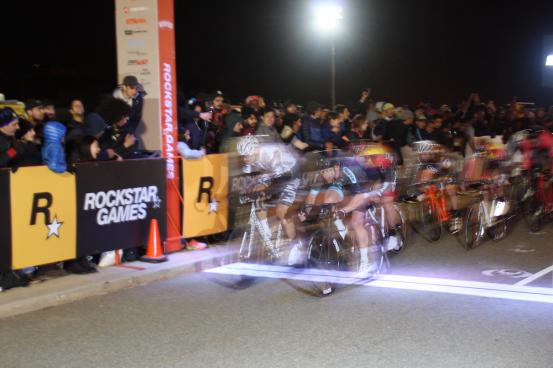- Commissioner’s statement on Ventura, Marte
- Ronnie O’Sullivan: Masters champion ‘felt so vulnerable’ in final
- Arron Fletcher Wins 2017 WSOP International Circuit Marrakech Main Event ($140,224)
- Smith challenges Warner to go big in India
- Moncada No. 1 on MLB Pipeline’s Top 10 2B Prospects list
- Braves land 2 on MLB Pipeline’s Top 10 2B Prospects list
- Kingery makes MLB Pipeline’s Top 10 2B Prospects list
- New Zealand wrap up 2-0 after Bangladesh implosion
- Mathews, Pradeep, Gunathilaka to return to Sri Lanka
- Elliott hopes for rain for Poli
Like it or not, Red Hook’s success tied to the fixie
- Updated: May 3, 2016

By now you’ve probably replayed the video of that massive pileup at Saturday’s Red Hook criterium so many times that your eyeballs hurt.
The video has reignited the longstanding debate between those who support fixed-gear road racing and those who see it as dangerous lunacy. Like clockwork, this debate always flares up after Red Hook’s annual crash videos hit the web.
There are dozens of pragmatic reasons for criticizing Red Hook’s format. Track bikes were created for velodromes, where banked walls prevent pedal strikes. Brakes help riders avoid obstacles, like sedentary motorcycles. A freehub lets you coast through corners. So why race without these modern conveniences?
You could train yourself to drive a car with your feet, after all, but that doesn’t make it a great idea.
The arguments for racing fixed gear track bikes on asphalt are far less practical. Piloting a fixie requires a different skill-set, so the winner isn’t always the rider with the biggest legs and lungs. There are lots of crashes, which is exciting. And, for whatever reason, the bikes have become the emblem of an urban cultural movement. For lack of a better word, they’re cool.
On paper, the argument feels pretty lopsided, right? Orthodox bike racing presents a much safer and more logical competition format. But here’s the thing: Up to this point, the Red Hook Criterium’s history has not proceeded according to logic or reason.
Here’s the race’s Cliff’s Notes history: In 2008 David Trimble held an unsanctioned, late-night race in Red Hook as a challenge between bicycle messengers and local road racers. To level the playing field, Trimble required everyone to compete on a brake-less fixie, the preferred tool of bike porters.
A dozen cyclists participated in that event. The next year, several dozen showed up, and The New York Times published a story. The year after, the race attracted …
continue reading in source velonews.competitor.com
